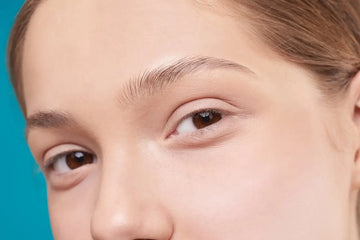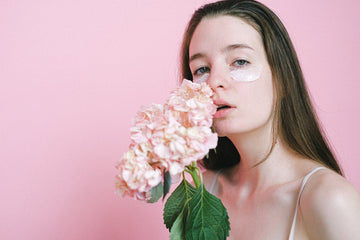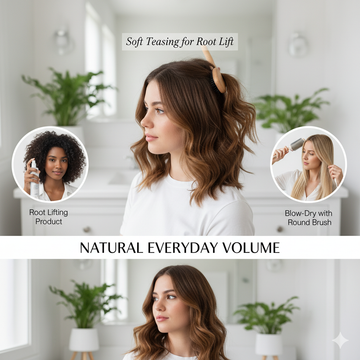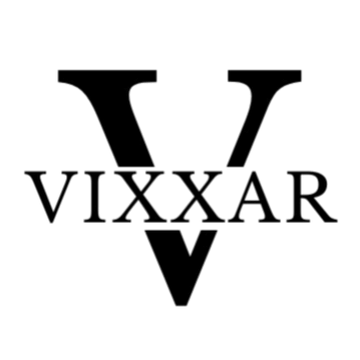When looking at anti-aging creams or serums, you’re going to see the words retinol and retinoid. While they look and sound the same, they’re different when it comes to renewing the skin. Knowing the difference will help you get the correct ingredient for your skin and help you in your beginner skincare journey.
At Vixxar, we want skincare to be uncomplicated, gentle, and effective. That is why we use natural science-powered ingredients and effective formulations that provide a glow to the skin without irritation.
Now let’s see the Difference Between Retinoid and Retinol while learning how to choose what is best for your skin.
What Is a Retinoid?
Retinoids are vitamin A-based ingredients that help to improve skin texture, reduce fine lines, and promote skin cell turnover. These are stronger and deeper versions or types of vitamin A that will help accelerate skin renewal at a rapid pace.
Retinoids are recommended for acne-prone, mature skin or for anyone who wants to get visible results quickly.
Since retinoids are powerful, they can also cause skin dryness or flaking while they are in the adjustment phase. Starting slowly and applying a moisturizer will help maintain skin balance.
What Is Retinol?
Retinol is a gentler form of retinoid, making it one of the most popular and beginner-friendly ingredients in skincare. You can easily find it in over-the-counter serums and creams, which are formulated to deliver visible results without harsh side effects.
Retinol works gradually; once applied, it converts into retinoic acid inside the skin, giving smoother and brighter results over time. It’s an excellent choice for those new to vitamin A products or with sensitive skin.
Vixxar’s retinol-alternative skincare combines science and nature beautifully, using Aloe Vera to soothe, Betaine to retain moisture, and Quince Fruit Extract for antioxidant protection. Together, these ingredients help your skin stay hydrated, calm, and glowing.
See Natural Retinol-Alternative Oil Serum
Retinol vs Retinoid: The Key Differences
Both retinol and retinoids are powerhouse ingredients for skin rejuvenation, but their main difference lies in strength, speed, and how they act inside your skin.
Let’s break it down clearly:
1. Potency and Conversion
- Retinol must first be converted into retinoic acid before your skin can use it.
- Retinoids like tretinoin and adapalene are already active, so they start working immediately.
-
Because of this, retinoids deliver faster and stronger results, but can also be harsher on sensitive skin.
2. Results and Skin Tolerance
- Retinol works more slowly, allowing your skin time to adjust while still achieving smoother, brighter results.
- Retinoids act quickly, but can cause dryness or peeling during the adjustment phase.
-
If you’re new to vitamin A skincare, start with retinol to help your skin build tolerance gently.
3. Prescription vs Over-the-Counter
Retinoids (like tretinoin) require a doctor’s prescription.
Retinol is widely available in many over-the-counter creams and serums, making it easy to include in your daily routine.
Ultimately, your choice between retinol or retinoid depends on your skin sensitivity, goals, and how quickly you want to see results.
See Vixxar Organic Skin and Haircare products.
Why Retinol Creams Are So Popular
Retinol creams have become must-haves in skincare, and for good reason. They deliver powerful anti-aging benefits while being gentle enough for everyday use.
Here are some proven benefits of retinol cream:
- Smooths fine lines and wrinkles
- Evens out skin tone and texture
- Fades dark spots and sun damage
- Boosts collagen for firmer, more youthful skin
-
Helps unclog pores and minimize acne
When used consistently, retinol transforms the skin’s overall look, giving it a soft, radiant, and healthy glow, exactly what most people dream of when aiming for clear retinoid skin.
What to Expect When You Start Using Retinoids or Retinol
Starting a retinoid or retinol routine can feel exciting, but it’s normal to notice some dryness or mild flaking at first. This adjustment period, often called retinization, simply means your skin is adapting to the active ingredient.
To help your skin transition smoothly:
- Begin with a low-strength formula
- Apply only 2–3 times a week, then increase gradually
- Always follow with a moisturizer
- Use sunscreen daily, as retinoids increase sun sensitivity
- Avoid combining with strong exfoliants or acids initially
These simple steps help ensure your skin enjoys all the benefits of retinol or retinoid without irritation.
Retinol or Retinoid: Which One Is Right for Your Skin?
Here’s a clear comparison to help you decide:
|
Feature |
Retinoid |
Retinol |
|
Strength |
Stronger and faster-acting |
Gentler and slow-releasing |
|
Skin Type |
Best for acne-prone or mature skin |
Ideal for sensitive or beginner skin |
|
Results Timeline |
Visible within weeks |
Gradual improvement over months |
|
Irritation Level |
Higher risk of dryness or peeling |
Low risk and easy to tolerate |
|
Availability |
Mostly prescription-based |
Available in over-the-counter creams and serums |
|
Usage |
Recommended under a dermatologist's advice |
Safe for daily use with moisturizer |
|
Main Benefits |
Treats acne, sun damage, and deep wrinkles |
Smooths fine lines, brightens tone, improves texture |
How to Use Retinoids and Retinol Safely
To get the most from your retinol or retinoid routine, follow these essential steps:
-
Apply at night on clean, dry skin
-
Use a pea-sized amount for the entire face
-
Avoid the eye and lip area
-
Follow with a soothing moisturizer
-
Apply SPF every morning to protect from sun sensitivity
-
Be patient and consistent; glowing results take time
Conclusion
Both retinoids and retinol are incredible tools for improving skin texture, tone, and overall youthfulness. The best choice isn’t always the strongest; it’s the one your skin tolerates well and you can use consistently.
Start with gentle retinol formulas, nourish your skin with hydration and sunscreen, and upgrade to stronger retinoids once your skin is ready. The secret to beautiful skin is patience, care, and consistency, not rushing results.
FAQs
1. Can I use retinol and retinoid at the same time?
No. It’s best to use one at a time to avoid irritation and over-exfoliation.
2. How long does retinol take to show results?
You’ll begin to notice smoother, brighter skin within 6–12 weeks of regular use.
3. Can I use retinol if I have sensitive skin?
Yes, start with a low concentration and introduce it slowly to let your skin adjust.
4. Do retinoids help with acne?
Absolutely. Retinoids are clinically proven to prevent breakouts by clearing pores and improving skin turnover.
5. Should I use retinol daily?
You can, once your skin adjusts, start every other night and increase as your skin builds tolerance.





